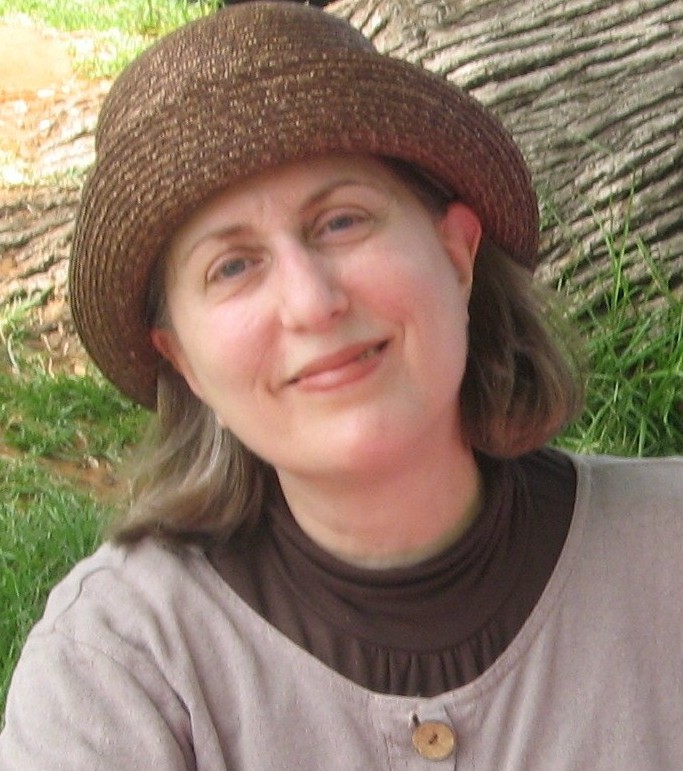Tehillim: Minhagim and Mysteries

Tradition tells us that Dovid Hamelech passed away on Shavuos. What better time, then, to explore some of the minhagim that have developed throughout the ages regarding the precious gift he gave to Am Yisrael: Sefer Tehillim

Shavuos in Jerusalem! While many have the minhag to walk to the Old City and daven Shacharis at the Kosel, some will go to Har Tzion to say Tehillim by the kever of Dovid Hamelech, who passed away on this day. The visit to Har Tzion is just one of the many minhagim that have sprung up over the centuries concerning Tehillim. When, where, and why did these minhagim begin?
Why Five?
Rav Eliyahu de Vidas, author of Reishis Chochmah, writes in Shaar Ha’ahavah (Chapter 1): “Among the things that bring a person to dveikus are saying some verses from the songs of Dovid Hamelech of blessed memory.” Many of our Sages have written about the power of Sefer Tehillim to instill both awe and love for Hashem. But when did the sefer take on its present form?
The tradition of dividing Sefer Tehillim into five books is a longstanding one, for as Midrash Sochar Tov states: “Moshe gave Israel the five books of the Torah, and Dovid gave Israel the five books of Tehillim.”
Yet the reasoning behind how the individual psalms are ordered within those five books is a mystery. In addition to Dovid Hamelech, several other authors composed Tehillim — Adam Harishon, Moshe Rabbeinu, Shlomo Hamelech, Asaf, the sons of Korach, etc. — and their contributions are interspersed with those of Dovid’s. Therefore, the division isn’t based on authorship, nor is Sefer Tehillim divided accorded to theme.
Another mystery concerns the number of chapters. Today, a standard edition of Sefer Tehillim has 150 chapters, but Maseches Sofrim (16:11), among other sources, says there are only 147, corresponding to the years of the life of Yaakov Avinu. This doesn’t mean three psalms were added later. The Gemara (Berachos 9b) tells us that Psalms 1 and 2 used to be one long psalm.
The Aleppo Codex, the oldest complete manuscript of Tanach that we know of, joins together Psalms 114 and 115. Minchas Shai suggests that Psalms 116 and 117 were also sometimes joined together. There are other opinions as to how to account for the discrepancy, and so this mystery also remains unsolved.
Daily Dose
The custom of reciting the Shir shel Yom goes back to the days of the Beis Hamikdash. According to Rosh Hashanah (31a), the Leviim chanted a different psalm each morning, and it lists which psalm was said on each day.
Rav Saadiah Gaon comments that because of the sanctity of Tehillim, they were at first recited only by the Leviim; the one exception was Hallel. It was only when the siddur was composed that Tehillim became part of the daily liturgy and was said by everyone.
Originally, reciting the psalm of the day wasn’t routine. For instance, at the end of Sefer Ahavah, the Rambam mentions that only some Jews had the custom to recite it. But by the end of the era of the Rishonim, it was the minhag of everyone to say Shir shel Yom, the psalm of the day; before Aleinu in nusach Sefard, and after Aleinu in nusach Ashkenaz.
When was Sefer Tehillim first divided into days and weeks? It’s customary to give the credit to Rav Menachem ben Aharon ben Zorach, author of Tzeidah Laderech.
Rav Menachem was born in Navarre in the early 1300s and later settled in Toledo, Spain. He wrote Tzeidah Laderech for wealthy, high-ranking Spanish Jews who needed a simplified code of law for daily life — one that would give the basics and could be easily understood even if you weren’t a talmid chacham.
Included in the five-part work is a section that divides Sefer Tehillim not only into five books, but also into weekly and daily readings. Although today’s standard division doesn’t follow exactly that of Rav Menachem’s — for instance, his fourth day of the month ends with Chapter 30, while ours ends with Chapter 28 — the divisions are very close.
Perfect Timing
When should we say Tehillim — and when should we refrain?
The general minhag is to refrain from reading Tehillim at night, from sundown until halachic midnight (chatzos), except for certain times, such as Leil Shabbos and Leil Yom Tov.
What if there is a sick person or a woman in labor? May a person say Tehillim at night on their behalf? According to Rav Ovadiah Yosef and the Klausenberger Rebbe, as well as many other Acharonim, one may say Tehillim before chatzos if they’re said to benefit another person.
What about in the morning? Should a person say Tehillim before davening Shacharis? It depends.
The Levush, Rav Mordechai Yaffe, says that because Tehillim chase away spiritual forces that can disrupt our prayers, a person should say Tehillim before davening. To wait until after davening defeats the purpose. On the other hand, Tzavaas Harivash, an anthology of teachings attributed to the Baal Shem Tov, says that a person shouldn’t say a lot of psalms before davening, because it could weaken the person’s concentration while saying the obligatory prayers. Therefore, Tehillim should be said after davening.
The Toldos Yaakov Yosef, an early follower of the Baal Shem Tov, offers a compromise. People who need a spiritual lift before davening, should say Tehillim or learn Torah before. People who won’t gain from this practice — they’ll have less concentration while davening — shouldn’t do it. As long as it’s done for the sake of Heaven, both minhagim are legitimate.
For Healing, Parnassah, and More
Sefer Tehillim holds a special place in the heart of Am Yisrael. It’s our “go-to” book during times of joy, when our hearts are overflowing with gratitude to Hashem. And its words of comfort and consolation are a balm to an aching heart during times of trouble.
In addition, we’ve traditionally turned to Sefer Tehillim to prevent problems from occurring or to obtain relief. For instance, the Chida, Rav Chaim Yosef David Azulai, writes in his commentary to Tehillim, Yosef Tehilot, that saying Tehillim regularly repels calamities and diseases.
The Tzemach Tzedek, the third Lubavitcher Rebbe, says: “If you only knew the power that lies in the verses of Tehillim and their effect in the celestial heights, you would recite them all the time. Know that the chapters of Tehillim break through all barriers and soar aloft from level to level, unimpeded. They intercede before the Master of the Universe and secure their effect with kindness and mercy.”
The Baba Sali recommends that every Jew completes Sefer Tehillim at least once a month. Rav Eliezer Papo, author of Pele Yoetz, has this advice for a person who has a problem or is in pain: Recite the entire Sefer Tehillim each day without stopping — and with kavanah and humility — and he will see wonders. This also applies to someone who must go on a journey.
But not everyone can recite the entire sefer every day — or even every month. Will saying just one or two kapitlach, on an “as needed” basis, also have a beneficial effect?
Perhaps you’ve noticed that in some editions of Sefer Tehillim a few words appear before the first verse of each psalm, suggesting that this chapter is especially effective for a particular thing: for general success, for protection against enemies, for recovery from illness, etc.
Sometimes there is an additional note: Say this chapter three times, or seven times, or ten times; say a particular chapter every day, say another one seven times a day for three days; say certain Tehillim together to obtain a salvation, etc. It therefore seems that even saying just one chapter can help resolve certain problems.
The source for these instructions is most likely Shimush Tehillim, an anonymously written treatise that is sometimes attributed to Rav Hai Gaon, the last of the Geonim of Pumbedisa.
Not a Vending Machine
Shimush Tehillim is mentioned by the Chida and others. But are we allowed to think that saying Tehillim can cure someone or protect them from danger? Isn’t that ascribing magical powers to the sefer’s words?
The Rambam (Avodah Zarah 12) forbids using verses from the Torah as an incantation, condemning those who “make the words of the Torah into a cure for the body when they are really a cure for the soul.” However, he goes on to say that it’s permitted for a healthy person to read verses from the Torah or chapters from Sefer Tehillim “so that the merit of reading them will protect him and save him from difficulties and injury.”
Rav Eliezer Waldenberg, author of Tzitz Eliezer, elaborates on the Rambam’s explanation, commenting that when we say Tehillim for a sick person, we are, in essence, praying to Hashem that He should heal the person; we hope that by saying Tehillim the person’s merits will increase. This is similar to reading Tehillim for protection, which is permitted.
Chevreh Tehillim to Tehillim Mechulak
In the old days, almost every shul had its chevreh Tehillim. It was usually for pious Jews who weren’t able to learn Gemara; instead they’d come to shul and say Tehillim as a group.
In addition to these daily gatherings, whenever a decree hung over a community, the Yidden would gather in shul to recite Tehillim. The Frierdiger Rebbe of Lubavitch, Rav Yosef Yitzchak Schneersohn, commented that this was the key to eliminating the Hamans that rise up in every generation: “Not with sword or spear, only with a heartfelt kapitel Tehillim.”
In our day as well, we gather to say Tehillim in times of danger and distress, but not always in shul. Sometimes we gather in private homes for “Tehillim Mechulak,” where pre-divided booklets are distributed so the group can more easily finish the entire Sefer Tehillim, and sometimes Tehillim groups are organized online.
When and where did the concept of Tehillim Mechulak begin? My short survey of a few members of the older generation drew a blank; they didn’t remember it growing up, but couldn’t remember when, exactly, that box of booklets made its first appearance. I therefore suspect it’s a more recent minhag. Perhaps a reader knows?
Another minhag that has become popular in recent times is Tehillim HaChida. As mentioned earlier, the Chida says that reciting Tehillim on a regular basis can protect a person from calamities and several harmful illnesses. In Avodas Hakodesh, he writes that if someone has suffered the effects of middas hadin — for instance, they are seriously ill — the person or his family should immediately gather ten people to ask for mercy for him and recite all the pesukim of Tehillim pertaining to the person’s name.
For instance, if a person’s name is Sarah, you’d say all the pesukim starting with the letter shin, then those beginning with reish, followed by those beginning with the letter hei. (This differs from the minhag to recite Psalm 119, which has a few pesukim for each letter and is similarly recited for a sick person.) If a group of ten can’t be gathered, even one person may say it.
Published volumes of Tehillim HaChida, in which all the pesukim of Tehillim are arranged according to the alef-beis, began to appear in Jewish bookshops by the 1990s, if not before.
The Power of Forty
Forty is a number that has many associations in Jewish tradition. But where does the minhag to do some special practice for 40 days come from — e.g., say the entire Sefer Tehillim every day for 40 days, daven at the Kosel for 40 consecutive days, etc.?
Apparently, the minhag to daven at the Kosel for 40 days comes from the Zvehiller Rebbe, Rav Shloimke. Once, he told a woman seeking a salvation to daven for 40 days at the Kosel. When she responded that she couldn’t because she had young children, he went for her and his prayers on her behalf were answered.
A source for davening for 40 days anywhere — whether at shul or at home — can be found in the Zohar, which says: “Anyone who prays for something for 40 days will certainly be answered.” Another source is Devarim Rabbah, which states: “Our rabbis said: There is a tefillah that is answered after 40 days. Who do we learn this from? From Moshe, as it is written, ‘And I fell prostrate before Hashem for 40 days.’”
However, the midrash goes on to say that there is a prayer performed for 20 days that was answered (Daniel), as well as one said for three days (Yonah), and one said for just one day (Eliyahu Hanavi). So why the popularity of 40 days?
The 13th-century kabbalist Rav Yosef Gikatilla may provide an insight. Commenting on Psalm 91, which Shevuos 5b calls “The Song of Plagues,” he writes in Shaarei Orah: “A person praying is just like someone traveling through perilous terrain…. If he’s worthy, the robbers won’t harm his prayers, but if he is not worthy, the destructive forces will be numerous and formidable. That is why Dovid Hamelech, peace be with him, introduced Tehillim to clear the way so the prayers could ascend unimpeded.”
He goes on to explain that Tehillim are called “zemiros” (Tehillim 119:54) because they are like the mazmeiros (pruning hooks) mentioned in Yeshayahu (18:5) — “They scatter and cut the evil from those fearful places.” Therefore, while some prayers may be answered at once, perhaps others require more days of “pruning.”
More Minhagim
Tehillim on Shabbos Kabbalas Shabbos, where Psalms 95–99 and 29 were added to the Friday night service, was instituted by the kabbalists of Tzfas in the 16th century.
What about saying Tehillim on Shabbos when it’s not part of a prayer service? Is it permitted? There’s a difference of opinion. According to the sefer Eshel Avraham by Rav Avraham David of Buchach, some have the minhag to say Tehillim on Shabbos because Dovid Hamelech was niftar on Shabbos. In fact, Skverer chassidim recite the entire sefer Tehillim before Shacharis on Shabbos morning.
Others, such as Belz chassidim, don’t say Tehillim on Shabbos because they are considered bakashos and we don’t make requests on Shabbos. Those who say Tehillim every day make up the ones they missed on the following Sunday.
Remember Your Name
What could be more embarrassing than arriving in Shamayim, after the age of 120, and not being able to remember your name? To prevent this from happening the Shelah Hakadosh, in his sefer Shnei Luchos Habris, says that every day, before the yehi ratzon at the end of Shemoneh Esreh, a person should recite a pasuk of Tehillim or from the Torah that begins and ends with the same letters that begin and end one’s Hebrew name. Lists of possible pesukim can be found in most siddurim.
Happy Birthday
Why do some people recite on their birthday the chapter of Tehillim that corresponds to their age? While it was the Maggid of Mezritch who brought it down in the name of the Baal Shem Tov, it was thanks to the previous Lubavitcher Rebbe that the minhag became more widely known. The correct chapter to read is the one that corresponds to the current year of life. For instance, if you’re celebrating your 65th birthday — meaning you’ve reached the end of your 65th year — you’d read Psalm 66 on that birthday. Some will continue to recite that kapitel every day of the year.
Wedding Psalm
Why do some people say Psalm 128 at a wedding, between the kiddushin (giving of the ring) and breaking of the glass? Ask if the families of the kallah and chassan come from Germany. German communities have had this minhag for centuries.
Tikkun Haklali
According to Rebbe Nachman of Breslov, saying Psalms 16, 32, 41, 42, 59, 77, 90, 105, 137, and 150, in that order, will rectify many transgressions.
A Light for Special Days
In addition to saying the Shir shel Yom, there’s a longstanding tradition to recite certain Tehillim on special days, such as Psalm 104 on Rosh Chodesh, Psalm 30 on Chanukah, and Psalm 22 on Taanis Esther. Since it will be Elul before we know it, we’ll conclude by taking a look at why we say Psalm 27 from Rosh Chodesh Elul until the last day of Succos.
The short answer: It’s a mystery. The minhag isn’t mentioned in the Gemara. The Rishonim don’t mention it either. But by the 1700s it was a well-established custom in many Ashkenazic communities. For instance, Rav Yaakov Emden mentions it in his Siddur Beis Yaakov, published in 1745. The minhag also appears in the Chida’s Moreh Ba’etzba and in Rav Ephraim Zalman Margolios’s Mateh Ephraim. The Mishnah Berurah confirms that its origin can be dated to the Acharonim.
Some say the reason for the minhag may have its source in Midrash Sochar Tov (27), which comments that the psalm alludes to the Yamim Noraim in its pesukim: Rosh Hashanah (“my light”), Yom Kippur (“my salvation”), and Succos (“His succah”).
The earliest mention of this minhag seems to be in Sheim Tov Katan, a sefer by the kabbalist Rav Binyomin Beinish Cohen, first printed in 1706. He writes that a person who is scrupulous about reciting the psalm daily from Rosh Chodesh Elul until after Simchas Torah has the power to annul Heavenly decrees. Rav Binyomin Beinish is describing a segulah, though; at that point the minhag wasn’t part of the established liturgy.
However, Sheim Tov Katan was very popular, and it was reprinted many times. By 1762, Rav Mordechai of Vilkatch, author of Shaar Hamelech, writes that the minhag of reciting Psalm 27 immediately after the prayer service had spread to communities both large and small.
The story doesn’t end there. Some say the minhag can be traced back to a 16th-century tzaddik named Rav Eliyahu Baal Shem Tov. Apparently, Rav Eliyahu used to say the psalm, although it’s not clear which Rav Eliyahu Baal Shem Tov was being referred to, because there were at least two tzaddikim by that name.
Despite the minhag’s widespread acceptance, there are kehillos that didn’t adopt the custom. For those who did, those following nusach Ashkenaz recite it after Shacharis and Maariv, while those following nusach Sefard recite it after Shacharis and Minchah.
Connection Is Key
Despite the many different minhagim, there’s one thing practically everyone agrees on: It’s good to recite Tehillim as much as possible. As the Shelah Hakadosh says, “One who longs to connect with Hashem and His praises should connect to Sefer Tehillim.”
(Originally Featured in Family First, Issue 645)
Oops! We could not locate your form.






